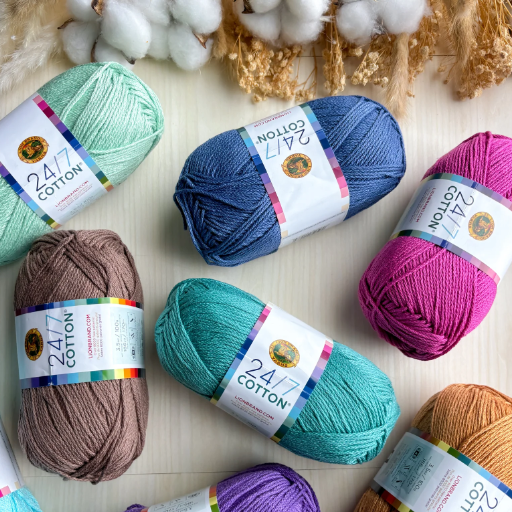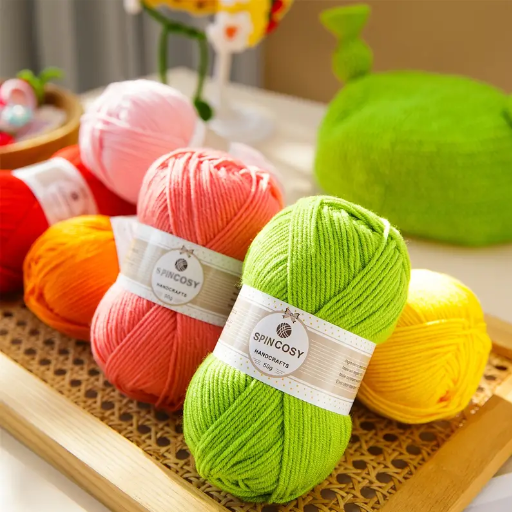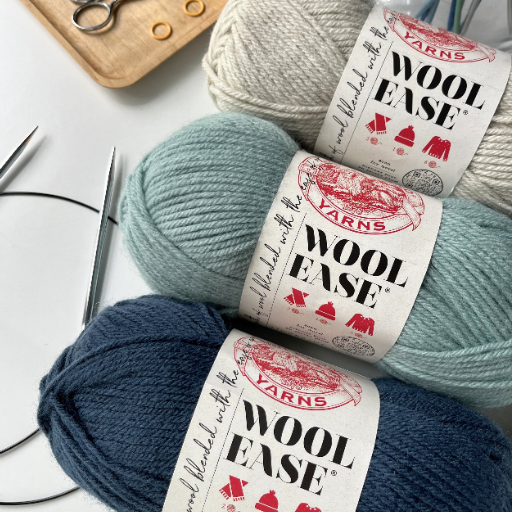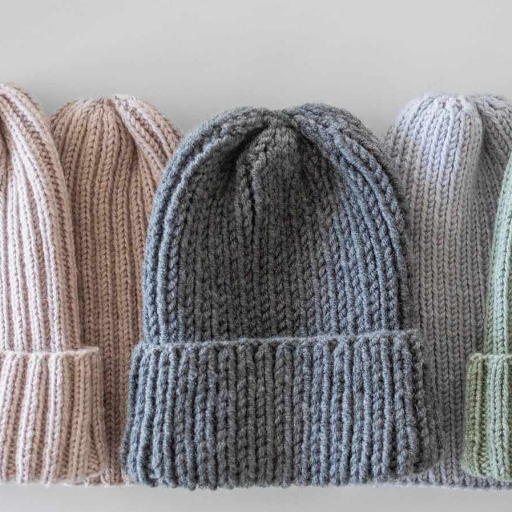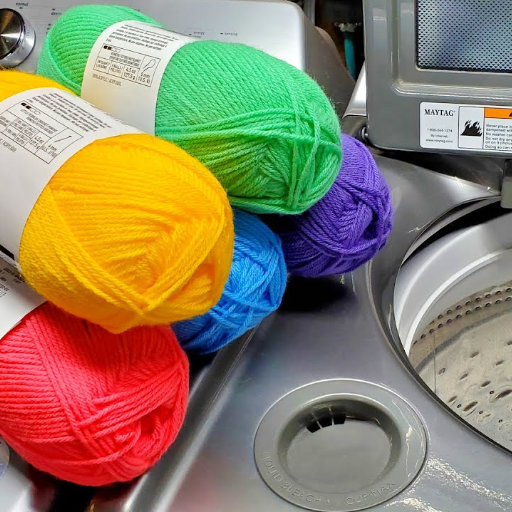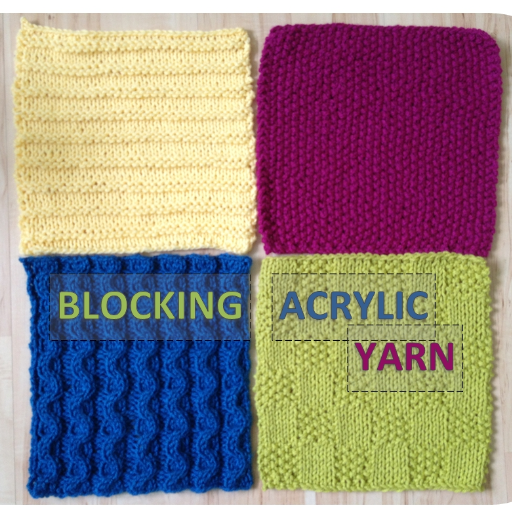Crochet has woven itself into my heart as a highly gratifying craft. Due to the nature of this topic, there is a lot of wiggle room for creativity and self-expression. Beyond the initial row of stitches lie the key hallmark techniques that seem daunting yet exhilarating to master as a beginner, and this guide makes it easy for you. This guide will assist you in completing the crochet project by narrowing down on one key component – the second row. Setting the right foundation is the core component of transitioning your work into more intricate patterns and structures, as such, learning how to transition into the second row is crucial. This guide is for anyone from complete beginners to intermediates looking to perfect their skills. It provides step-by-step instructions and valuable tips that ensure success in the later stages of the crochet journey.
How do I start the second row in crochet?

For the second row of crochet, first turn the work around so you have the right side for stitching. Next, chain a certain amount of stitches depending on your pattern, one for single crochet, two for half double, or three for double crochet. After, place your hook into the first stitch or space stipulated on the pattern. Then continue working across the row stitch by stitch while maintaining even tension so the end result is polished.
Understanding the importance of turning your work
turning your work is an important factor that can change the outcome of your overall crochet project. When you turn your work properly, it ensures that every row of your project aligns which keeps the consistency and symmetry of the project intact. It also helps in preventing twisting or uneven edges which can affect the overall look of the piece being created. Achieving a professional touch in any project – be it a scarf, blanket, or an intricate design, is about mastering this step.
Inserting your hook into the first stitch
To place your hook into the first stitch, you need to find the very first stitch on your row, which is usually located at the top of the chain or previous row’s edge. Now, slide your hook through both loops of the stitch making sure it slides in cleanly. This technique also locks your hook in place in preparation for what you will do next. It allows you to do a single crochet, double crochet or any other stitch. Provides proper placement and ensures even tension throughout the entire work so that the same smooth look is achieved all through the project.
Creating a turning chain for height
Whenever I need to make the turning chain for height, I always pay attention to the last stitch I completed on the previous row. For example, while getting ready to do single crochet, I will chain one, while for double crochet, I will chain either two or three depending on what the pattern is. The turning chain serves as the height needed for the next row while still being aligned with the previous row that was completed. I make sure my chains are reasonably spaced and not too tight because it aids in flexibility and restricts the edges from curling or pulling. This part is important so that every crochet project has a neat, professional finish.
What’s the step-by-step process for crocheting a second row?

- Turn Your Work: After you have done the first row, turn your work so it is sideways. Now the stitches from the first row are in front of you.
- Make a Turning Chain: Depending on your type of stitch, such as single crochet or half-double crochet, the number of stitches you chain should be equal to the height of the stitch.
- Insert Hook in the Next Stitch: Now skip the stitch at the base of the turning chain, and put your hook into the next stitch. This position can change depending on your pattern.
- Yarn Over and Pull Through: Yarn over, pull through, yarning over, pulling through the loops, performing your desired stitch. This is how you would complete the stitch.
- Continue Across the Row: In this row, stitch in every space provided but maintain the tension at each stitch to make the row look neat.
- Finish the Row: Don’t forget to work into the last stitch as skipping it will cause your work to have rough edges.
Do these steps for every row separating the edges in a neat orderly manner to create a professional look.
Completing the turning chain
My focus is always on accuracy and uniformity when it comes to finishing the turning chain. After every row, I chain the explicit number of stitches stated in the pattern because this determines the ideal height of the next row. A single crochet row typically requires one chain, while a double crochet row needs three. I also pay attention to the tension, as any looser or tighter than the rest makes for distorting edges. This one little thing is what makes the difference between an amateur project and a professional one.
Working across the previous row
As mentioned, fitting the hook into the correct stitch or the space indicated in the pattern in the previous row is vitally relevant. Consider the kind of stitch it is and make sure you keep even tension and consistency throughout. To make it easier for beginners, one can count stitches done to make sure the row has the required total. Take the stitch structure and position as well since they will make sure the fabric does not fall apart and give a neat and smooth finish.
Finishing the last stitch of the second row
It is crucial to be accurate when closing the final stitch of the second row because this crucial step lays the groundwork for the rest of your work. I always ensure to double check my stitch here to avoid any discrepancies later on. When I complete that last stitch, I take a moment to look back, checking that the entire row is even, tensioned and aligned to the pattern as per the specifications. This step may seem minor, but it’s these little habits that really pay off in improving the quality of your work.
How do I transition from the first to the second row in different crochet stitches?

The movement from row one to row two in crocheting varies depending on the crochet stitch used. For a single crochet, at the end of the row, chain one, turn your work, and stitch into the first stitch of the row. If it’s half double crochet, chain two before you turn, then go into the first stitch. Double crochet requires you to chain three and turn your work. You should start stitching in the second stitch unless the pattern says differently. Always check your patterns for details that need these modifications. When it comes to edges, the turning chain should be consistent.
Single crochet second row technique
I begin every row by completing a chain stitch. It is fundamental to always make a chain stitch before starting a row in single crochet, else your height gets compromised. After I have finished my turn, I push my hook through the very first stitch and I make sure I am pulling my yarn from both loops, as this ensures the outer edge of my work is neat and strong. As you move forward, remember to keep the yarn taut so the rows are not uneven and the work looks clean. Learning this simple technique is a stepping stone for more complex stitches and patterns in crochet.
Double crochet second row method
When beginning the second row of the double crochet, make a starting chain of three. This chain will now be regarded as the first double crochet of this row. Next, rotate your work. You should insert your hook into the second chain from your hook (or follow your pattern). Yarn over and pull through. Yarn over again and pull through two loops. Yarn over one more time and pull through the remaining two loops. To finish the row, make sure to maintain even tension across the row to ensure that the final result is a tidy one.
Adapting for various stitch patterns
understanding the bottom roots stitch fundamentals is crucial when trying to adapt for changing stitch patterns. Placing a shell, or cluster stitch right after a double crochet shouldn’t be a mindless act, but more of a defined process in which placement and counts are carefully adjusted to ensure proper flow in the pattern. Before setting out the actual design work, it won’t hurt to test a swatch, as this would make sure that whatever stitch pattern set down flows effortlessly and comes out as planned. Also, feel free to change the starting chain amount or turning chains, because the need for flexibility in adapting the patterns for the specific project is vital. Creating nice fills becomes second nature with practice, and it fosters incredible creativity.
What common mistakes should I avoid when crocheting the second row?

Crocheting comes with a host of complications. In the second row, a miscalculation could be assembled as a miscount of stitches. This can make the entire project lose its shape. Knowing very well where to stop at the last stitch in the previous row is how to ensure that the correct stitch count is maintained. Another common mistake is placing your stitches too tight or too loose, which can tamper with the flow and tension of the pattern, and can further lead to distortion. Lastly, unless the pattern states very differently, never exclude the turning chain. It can cause rugged edges which are horrible. Slowing down and checking these pointers relates to a high quality piece.
Skipping the first or last stitch
Trust me when I say that missing out on the first or last stitch is a rookie error I have made too! In reality, it is something that people make more often than you’d imagine, mainly at the start or trying to work with a more complex pattern. Here’s why skipping stitches is a problem and how to remedy it:
- Maintaining the Right Stitch Count: Each row of the project has to have the specific number of stitches in it so that the shape and size of the piece remain the same. If by any chance you omit the first or last stitch, then the piece starts narrowing or warping, which does change the design.
- Ensuring Even Edges: First and last stitches do help with clean straight edging. Without these, the edges get ragged or slanted, which becomes very apparent in the final piece and hard to rectify afterwards.
- Pattern Integrity: Different elements in a pattern may require those edge stitches to structure or design borders or motifs, skipping these may affect the design causing it to leave gaps or be different in rows.
To avoid this, I recommend these tips:
- Make sure to check for skipped stitches by counting each one at the end of every row.
- If the pattern involves turning stitches or a chain, place stitch markers on the first and last stitches. This lets you take your mind off keeping track.
-
It’s also important to determine whether or not the turning chain is considered a stitch; this informs where your first and last stitches will go.
Double-checking the small details ensures your project turns out beautifully and saves you from any sort of frustration in the future!
Incorrect stitch count
As mentioned earlier, there are some explanations that are linked to having an incorrect stitch count on a project. This could stem from skipping stitches, miscalculating chains, or failing to read the instructions accordingly. You can set them right by careful counting of every stitch in each row. You can use tools like stitch markers at important points in your work to avoid frequent counting. Also, always check the pattern regarding the turning chain and whether it counts as a stitch. Most knitting gurus would suggest that picking out anything that unravels to the error is the best solution, without compromising the integrity of your work. The key may be to not lose track of the stitches or other details in order to work through this obstacle.
Improper tension in the turning chain
I have come to understand that much like the issues in the chain of rotation, improper tension is an easily solvable problem with constant practice. The turning chain serves as an anchor for the subsequent row: if it is excessively tight, your edges will tug and your project will pucker. And if it is excessively loose, you will achieve gaps or a wavy edge. As with all tension maintenance, I recommend having a natural hold of the yarn and the hook where the movements are smooth and never forced. Such time and effort in trying out new strategies will greatly help one achieve control over the yarn tension for the professional and precise finishing touch.
How can I keep track of my rows while crocheting?

For crocheting, the easiest and useful method of keeping track of your rows is by using a row counter and markers. A row counter can either be in the form of a tool or a digital device that helps you log your progress after the completion of each row. Stitch markers, however, can be added at the beginning or end of each row for visual tracking. In addition, maintaining a written tally or crochet apps intended for tracking can help you stay organized, especially with the more complex patterns.
Using stitch markers to mark the beginning of rows
stitch markers are one of the best tools for helping a person remain organized while crocheting because they are quite simple and very effective. I suggest that you, as soon as you commence working on the row, place the marker on the first stitch of the row. This way, there is no ambiguity about where the row starts, which is especially useful for circular and more complex designs. Personally, I prefer brightly colored or locking stitch markers since they are easy to spot and secure. These simple step saves a lot of time and avoid making mistakes while trying to solve difficult patterns.
Counting rows like pages in a book
Counting rows in crochet is similar to flipping through the pages of a book. Each finished row is akin to a page that adds to the final project. So as to achieve this accurately, stop occasionally to count your rows with a row counter or in your head. For complex or long patterns, paper charts or digital apps can be used to track rows easily. This method also adds certainty and lessens the chances of missing or Overcounting rows which ultimately saves time and anger in the future.
Utilizing row counters and crochet apps
In my life, using row counters and crochet apps has simplified the entire process with unparalleled accuracy and ease. I personally prefer digital row counters or crochet apps to help me stay organized when I am tackling difficult patterns with elaborate sequences. These tools enable me to freely concentrate on the creative aspect without worrying about tracking my progress. Whether I’m using a clicker counter to count manually or an app with pattern integration, all of these tools have greatly improved my crochet experience.
Are there any tips for maintaining consistent tension in the second row?

Like the first row, maintaining consistent tension in the second row begins with a grip on the hook and yarn. Aim for a smooth pull when drawing the yarn through the stitch. Also, ensure that when making loops, they are not too tight or too loose. Beginning with a foundation row that is not overly tight can also assist in attaining uniform tension. Moreover, regularly checking how things are progressing and deciding if the stitching process needs to be changed will enhance the quality of the uniform finish. Keeping a keen focus on the details will achieve the desired outcome without much effort.
Practicing your grip on the yarn and hook
I have found that people experience yarn and hook mastery, the grip being the most important part, is the one that makes them the most comfortable. I advise that people try different grips, like the pencil or knife grips, and see which one enables them to have better control over their movements. I, for example, use a different grip based on what kind of yarn I am using because different textures and different weights respond differently. The most important thing is not to grip too tightly, as this usually causes problems with tension and, in the long run, tires your hands. If you have it with many stitches, you will find a grip that makes you comfortable and gives you beautiful even stitches.
Ensuring even spacing between stitches
For stitches to be even, balance must be achieved through sufficient tension, consistent technique, and practice. Concentrate on achieving a steady rhythm throughout the work, pulling each loop to a uniform height and maintaining a constant level of tension. It is also useful to stop every so often to check your stitches, adjusting those that look too tight or too slack. Constantly marking or counting stitches on large work pieces ensures accuracy and spacing. Remember, perfect spacing tends to come naturally for patterns that have repetitive movements.
Adjusting your technique for different yarn types
I remember the first time I learned how to manage different types of yarns. With every material, I had to change my technique to match the characteristics of the specific yarn. If I am working with silk or bamboo yarns, for example, I focus on keeping a higher tension because the stitches will get loose if too much tension is not applied. When dealing with bulkier yarns, I make sure to have a loose grip and large motions to adjust to the size. Also, in order to prevent any overstretching or fraying, I will give fine yarns a feather-like touch while paying attention to my tools. Each type of yarn has its unique texture and stretchability so learning how to manage all of them requires a certain level of experience, but with time, I have mastered the ability to flow with the yarn to get a polished finish every time.
Where can I find additional resources for mastering crochet rows?

Crafting blogs, online guides, and even YouTube now have a wide range of online tutorials focused on crochet rows, which can be easily accessed. Even books and eBooks bought from a bookstore or some other reputable place cover crochet techniques with specific illustrations and detailed explanations on rows. Tips and advice from friends with the same interest can also be found on websites like Ravelry and community forums. Make sure to also check out local craft stores, some of them might even offer hands-on learning workshops or guidance.
Recommended crochet patterns for practicing rows
the best practicing row patterns are the ones that are simple at the beginning but get more complicated over time. Dishcloths work well as a base project because they let you focus on controlling tension and stitch uniformity. After you get comfortable, try out the basic striped scarves, which introduce color changes and build confidence in long row handling. Granny squares are another perfect choice, as they have a high level of repetition while allowing you to get used to different stitch combinations. All of these patterns not only enhance your skills but are also useful and pretty.
Online crochet communities for support and advice
Beginner and professional enthusiasts alike enjoy the invaluable resources provided by online crochet communities. Platforms like Ravelry, Reddit (for example, r/crochet), and Facebook crochet groups allow users to ask questions, showcase their work, and look for motivation. Crochet Crowd websites and Bella Coco YouTube channels “how to” videos offer tremendous tutorials and step-by-step guidance. These communities foster collaboration, motivation, and overwhelming resources to build your crochet skills.
Reference
- How to Crochet the Second Row – Tutorial Eight (By Golden Berry) – A detailed tutorial on crocheting the second row.
- HOW DO YOU ADD A SECOND ROW???? (Reddit) – A community discussion on challenges and tips for adding a second row.
- A Beginner’s Tutorial for Perfecting Your New Row (Textile Yarn) – A beginner-friendly guide to mastering the second row and beyond.
Frequently Asked Questions (FAQs)
Q: Is there a video tutorial available for crocheting the second row?
A: Yes, we have a step-by-step video tutorial available on our website. You can view it by following the link in the description below. The video includes a transcript and is perfect for beginner crochet enthusiasts.
Q: How do I join the second row to the first row when crocheting?
A: To join the second row, insert the hook into the last stitch of the first row. Then, chain 1 (unless otherwise written in the pattern) and begin working your stitches across. This method creates a smooth transition between rows.
Q: Can I see step-by-step photos of how to crochet the second row?
A: Absolutely! We have a detailed step-by-step guide with photos available on our website. These photos clearly illustrate each stage of crocheting the second row, making it easy for beginners to follow along.
Q: What are the basic stitches I need to know for crocheting in rows?
A: For basic crochet in rows, you should be familiar with chain stitches, single crochet, and turning chains. These fundamental stitches will allow you to create two different looks for your project, depending on which side you choose as the right side.
Q: How do I count my stitches when working on the second row?
A: Start counting from zero at the beginning of the row. Each completed stitch counts as one. It’s important to count your stitches regularly to ensure you’re maintaining the correct number across each row.
Q: What should I do if I still have questions after watching the tutorial?
A: If you still have questions after watching our crochet tutorials, feel free to leave a comment on the video or send us an email. We’re always happy to provide extra help to ensure you master your crochet projects.
Q: Are there any tips for maintaining tension in the second row?
A: To maintain even tension in your second row, try to keep your yarn wrapped around your fingers consistently. Practice is key – the more you crochet, the more natural it will become. Remember, it’s okay if your first few projects aren’t perfect; consistency will improve with time.
Q: How long should it take to complete a second row for beginners?
A: The time it takes to complete a second row can vary greatly for beginners. On average, it might take about 15-24 minutes, but don’t worry if it takes you longer. Speed will come with practice. Focus on getting your technique right rather than rushing through.








